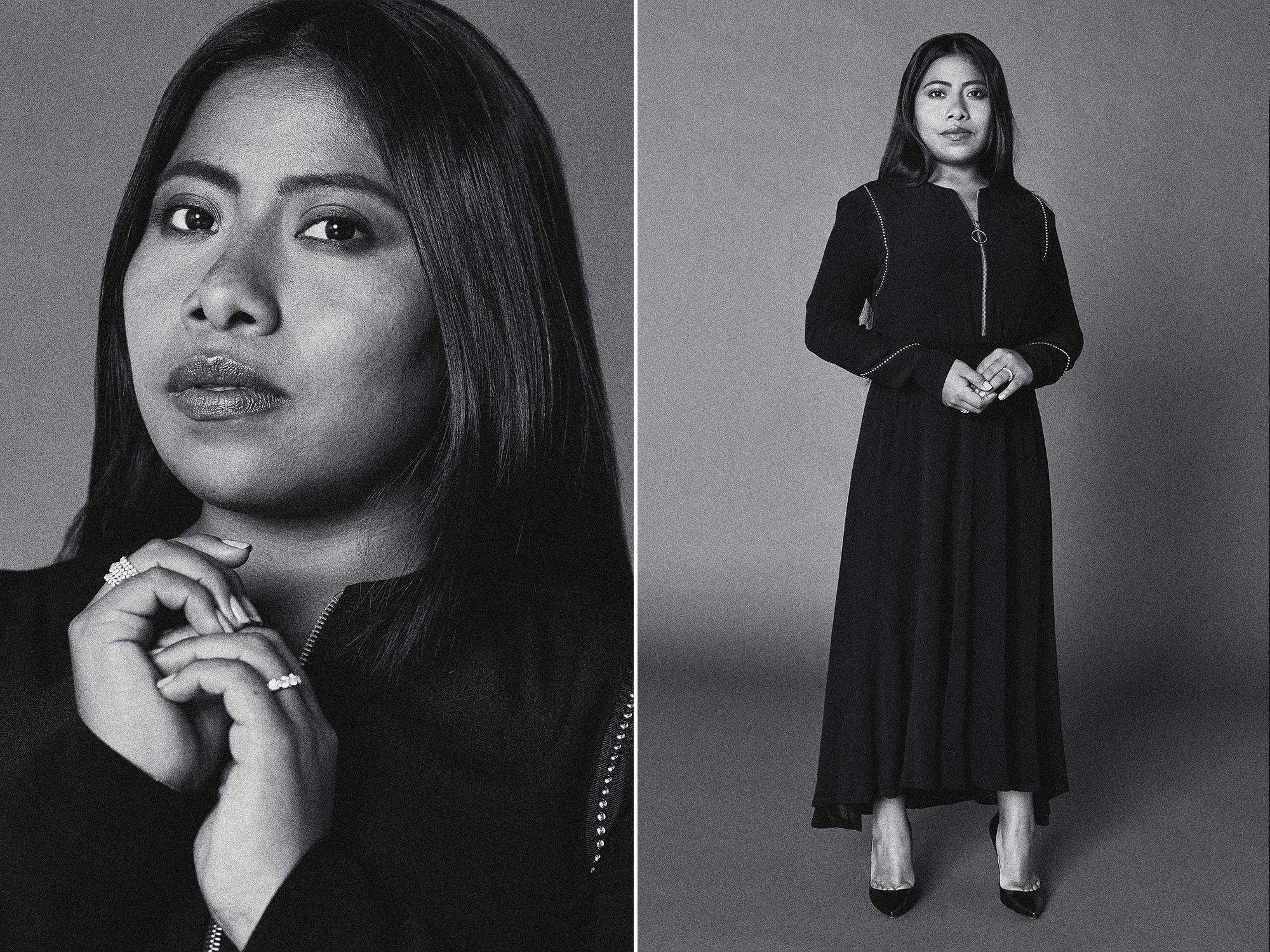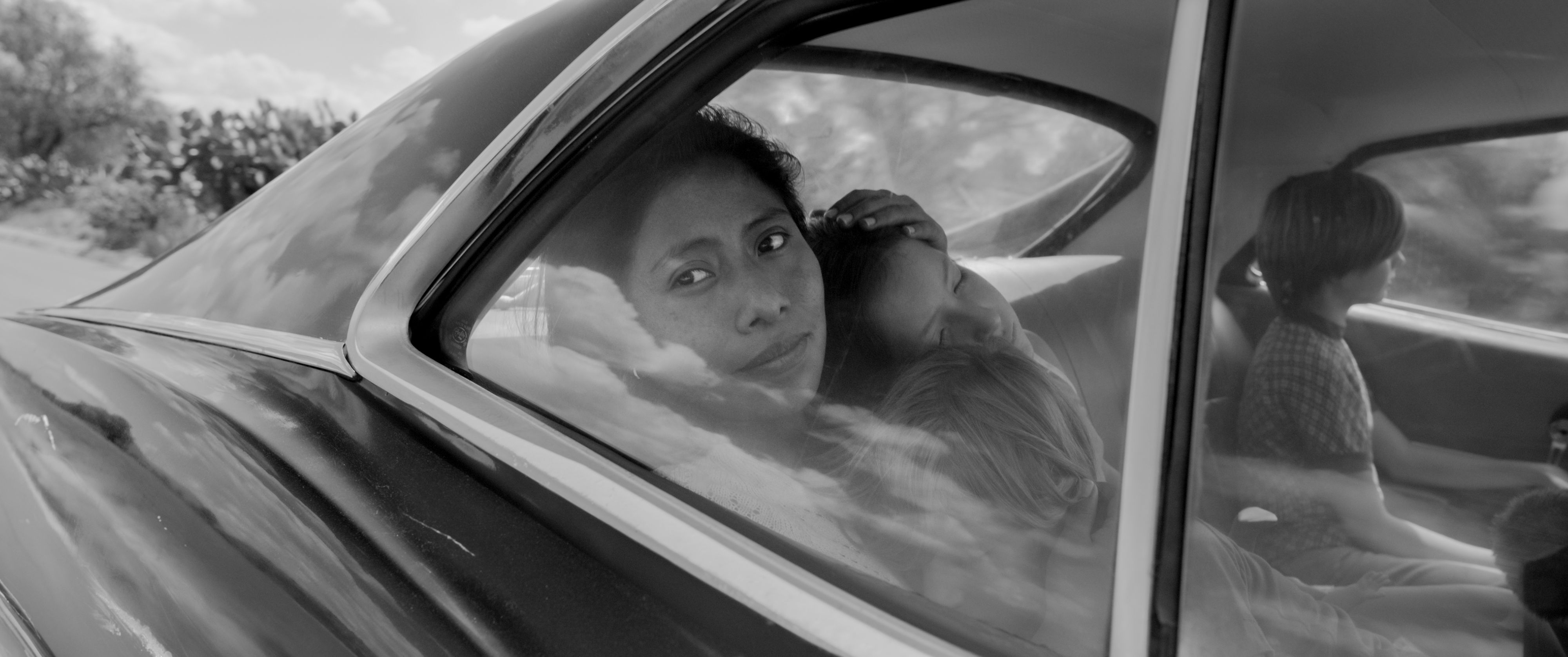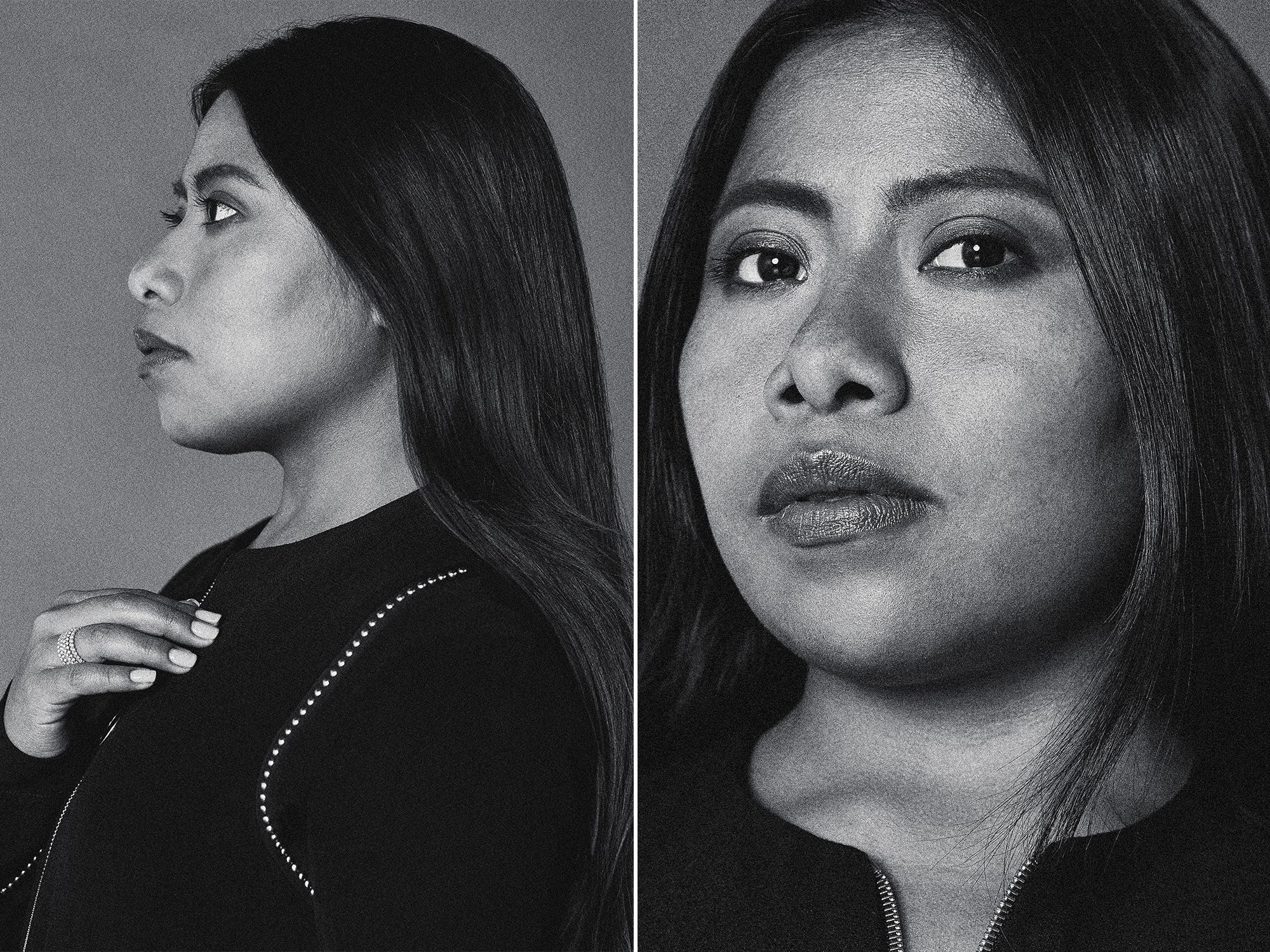Yalitza Aparicio on 'Roma' Journey: "This Film Is An Opportunity to Make People Reflect"

The first time I meet Yalitza Aparicio, it’s at the Roma premiere after-party at the Toronto International Film Festival in early September 2018. She walks by, almost unnoticed, with her best friend and co-star, Nancy Garcia, as a hoard of partygoers, celebrities, and critics clamor feverishly across the room to meet director Alfonso Cuarón, who’d just won the Venice Film Festival’s Golden Lion days earlier. At that point, Toronto was only the third festival Roma had been shown at, but already, word was this was going to be the film to beat at the Oscars. Talks of the movie being Cuarón’s masterpiece were starting to circulate, as well as questions about the woman at the center of this very personal film—who was she, and how did Cuarón find her? Aparicio, stopped only a few times when recognized as the lead actress of the very film we were celebrating, strolled through the party relatively unfettered, taking in all the festivities and glamour with humility and wonder. That night, right next to the dessert table, I briefly congratulated her and took a quick photo with the then-unknown actress. When we meet again, at the beginning of January, awards season is about to kick into full gear and most of the world—at the very least, the entire film community—knows who Aparicio is.
When we sit down to talk in the cafe of a posh West Hollywood hotel, we chat in Spanish, translator free, and she laughs, reminiscing about that time before the ceaseless media interviews, festivals, premieres, and non-stop traveling. As she sips on hot ginger tea during an unusually cold day in Los Angeles, she reflects on how her life has changed over the past two years. “I feel very happy because at the beginning of each new year I say, ‘I’m going to go out more, I’m going to learn more,’ and so on, and every year was the same,” Aparicio says. “But this year was different because I actually began to go and get to know different places. I met a lot of people and had new experiences. It’s made me very happy.”
The 25-year-old is living a Cinderella story that could be a movie itself. It all started in the summer of 2016, when Aparicio returned home after receiving her teaching degree from a school an hour away from her hometown of Tlaxiaco, Oaxaca. Her older sister, Edith, is a singer and had heard about an audition for a movie happening nearby, but since she was pregnant, she begged Aparicio to go and tell her about it. Aparicio went with her mother—very cautiously, as she was afraid it might be a human trafficking scam—with no idea who Alfonso Cuarón was, much less his acclaimed status in the film industry. When Cuarón offered her the role of Cleo, the heart and soul of the film based on the women who raised him, Aparicio famously responded, “I have nothing better to do.” Since the film’s first premiere at the Venice International Film Festival in August 2018, Aparicio has been working non-stop, making appearances at Q&As, screenings, Hollywood parties, and more. Today, she’s the first indigenous Mexican woman to be nominated for Best Actress and only the fourth Latina to even nominated in the category (the last was 14 years ago, with Catalina Sandino Moreno nominated for Maria Full of Grace). It’s a long way from Aparicio’s hometown, where she’s known simply as her sister’s younger, quieter sibling.
“[Edith] is more known. She sings, so everybody knew her. And they know my little brothers because they dance” Aparicio says. “But very few people knew [me], because I was studying outside of Tlaxiaco. Now that I’m back, it’s funny because I would be accompanying my brothers, my sister, or my mom, and someone would say to them, ‘Hey, congratulations that your sister is in that movie!’ And I was beside them and a lot of them didn’t recognize me! One time they told my mom, “When is [Yalitza] coming? She is coming, right, or did she forget about Tlaxiaco?’ And my mom would point to me and exclaim, ‘But here she is!’ And the people were like, ‘Is she really here?’ It used to make my sister and I laugh. But what’s beautiful is that people would then approach to congratulate me and tell me, ‘No, you go on, keep putting the name of Tlaxiaco up. Keep going, don’t give up if people criticize you. Let them talk but you keep fighting.”
Mexican communities are frequently divided by invisible but very apparent lines of class, race, and economic status. Indigenous pueblos, like the one Aparicio comes from, are often left out of political conversations or seen as “less than” based on the color of their residents’ skin and economic disparities. For example, although over 21 percent of Mexicans identify as indigenous as of 2015, 2019 marks the first year an indigenous woman has ever been on the cover of Vogue Mexico. Aparicio appeared on the magazine’s January 2019 cover.
“Roma is not trying to be representative of all of Mexico. It is simply one representation of a diverse Mexico, it is one of the many faces that exist, it is one of the many colors that we have.”
“Unfortunately, in Mexico there is discrimination” Aparicio says solemnly. “I feel that this [movie] is an opportunity to see that we are diverse, that we do not all have the same skin color or the same appearance or anything. I have read comments where they say things like, ‘[The movie] does not represent Mexico.’ In a way, they are right, because Roma is not trying to be representative of all of Mexico. It is simply one representation of a diverse Mexico, it is one of the many faces that exist, it is one of the many colors that we have. I feel that it is also the opportunity for us to reflect as Mexicans, that we are diverse, and we must accept ourselves as we are.”
The role of Cleo is based on Cuarón’s own childhood nanny, Libo, who is still very much a part of the Cuarón family and has made cameos in several of Cuarón’s films. Cleo, like Libo, is so much more than a nanny to the family she cares for. She’s the surrogate mother to its children, and the caretaker of everyone in the household, including the parents, grandmother, and family dog. Without Cleo, it’s evident the family would not function as a whole. But, as is the case for domestic workers in Mexico and many other Latin American countries, Cleo might be loved by the family—and she may love them as her own—but in the end, she is an employee.
Aparicio in a still from Roma.
In observing the dynamic between Cleo and Sofia (Marina de Tavira), who is based on Cuarón’s mother, Aparicio began to understand her own mother more. “The life of Cleo and the life of Sofia made me realize and understand many things that happened around me when I was growing up that one, as a child, sometimes does not understand. For example, when Sofia begins to try to cover for the children’s absent father, that is her way of protecting them from suffering from their father leaving them. I think that many mothers do that—they stay, they experience all the pain, everything is kept within them, in order to protect the family. Children don’t know that mothers do that until much later.”
Aparicio reflects on a time shortly after her own father abandoned her family. She was a young teen and her brothers were toddlers. She can vividly recall feeling angry, but directing that anger at her mother instead of her father. Now, she realizes it was because of how her mom took on the pain herself, rather than have her children believe their father didn’t want to be with them. “Moms will never say, ‘Oh, well, he’s a jerk, and he left us.’ They always talk to you so nice about your dad, that you end up getting angry with mom,” Aparicio says. They’ll never speak ill of him, instead [saying] things like, ‘Your dad went to work, he has a lot of work, he cannot come home, but he sends you this,’ and it would be food or a gift, although my father did not send it.”
Aparicio continues: “When I watched those scenes [where the father leaves the family in Roma], it came to my mind what I had lived. All those moments that I went through. I remember a lot. Watching when the father leaves, how Alfonso created it as if he was reliving the same moment where he watched his father leave, but didn’t know he wouldn’t be back. That was a very painful scene for me … I haven’t talked to my mom about it though. I don’t want to make her re-live the pain.”
The scene Aparicio is referencing lasts no more than a minute onscreen, but leaves a shadow over the rest of the film and the characters within. It’s an obvious source of pain for Cuarón, and shot in the way of someone who feels the impact all these decades later, though it flicks by like another distant memory. Aparicio says she “understood more things” about her mother after watching the film. “She is a domestic worker as well, and she would tell me of the children of the family she worked for, things like, ‘No, they are my children too,’ or, ‘It is also my family,’ Aparicio says. “She took care of those children as much as she took care of us and she looked out for that family as she looked out for our family. When I reflected on Cleo, that was when I realized that it is true. Women are incredibly strong and fight for so many things and against so many things, and all for the well being of their families.”
Roma has been an awakening of sorts, causing the global film community to reflect on how a story so specific, and so very Mexican, can have an impact. The film has started conversations about how Americans and Westernized societies view and analyze other cultures, traditions, values, and challenges, and whether this Anglo lens should be the standard through which we view other countries.
Meanwhile, Aparicio is looking at her involvement in the film and how to move forward from it. “I really liked this experience, more because I realized that through a movie you can transmit many messages,” she says thoughtfully. “This film is an opportunity to awaken many things, to make people reflect. But then again, this is so far from what I wanted. My dream has always been to be a teacher because you can educate children and motivate them to keep going forward. But if I were presented the opportunity to make another film, I’d welcome it. I would love to be able to transmit those beautiful messages that I have always wanted to impart on children, and to make people reflect on what is happening right now, to awaken them.”
Unlike that night several months ago in Toronto, Aparicio has become more aware of her significance to Roma, to representation, and even more so, how her decision to take on the role of Cleo is changing her life and the lives of the many little girls who look like her. “I just hope that people realize that we are special just as we are, we do not need to change anything. Simply love ourselves and then other people will begin to accept that we are diverse and that does not make us different. We have the same right to achieve dreams, the same right to be in a magazine, to be in a movie and without any limitations.”
Source: Read Full Article




